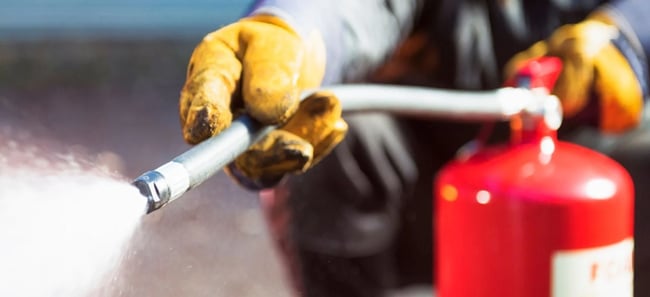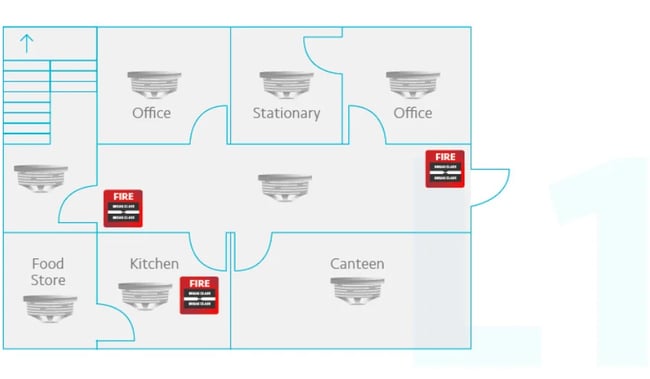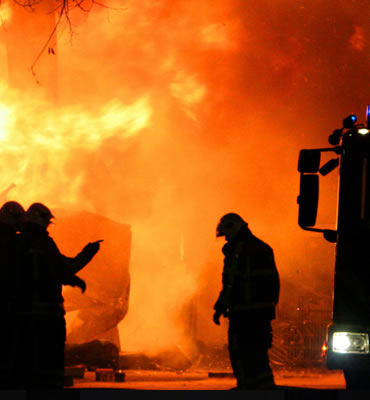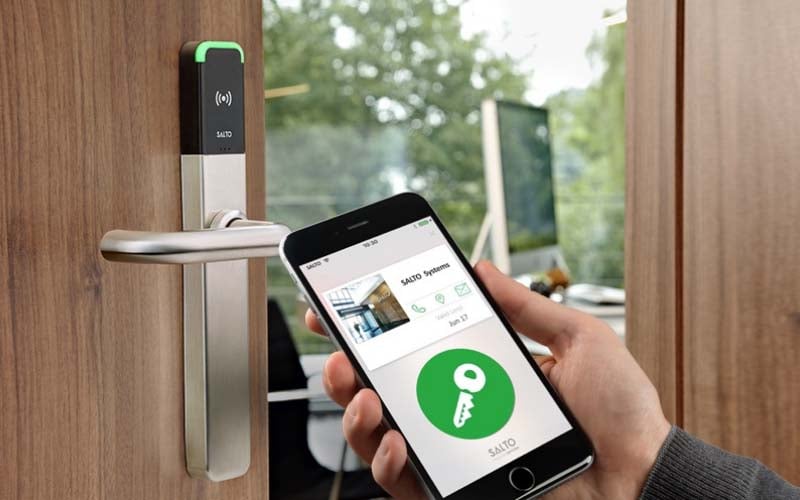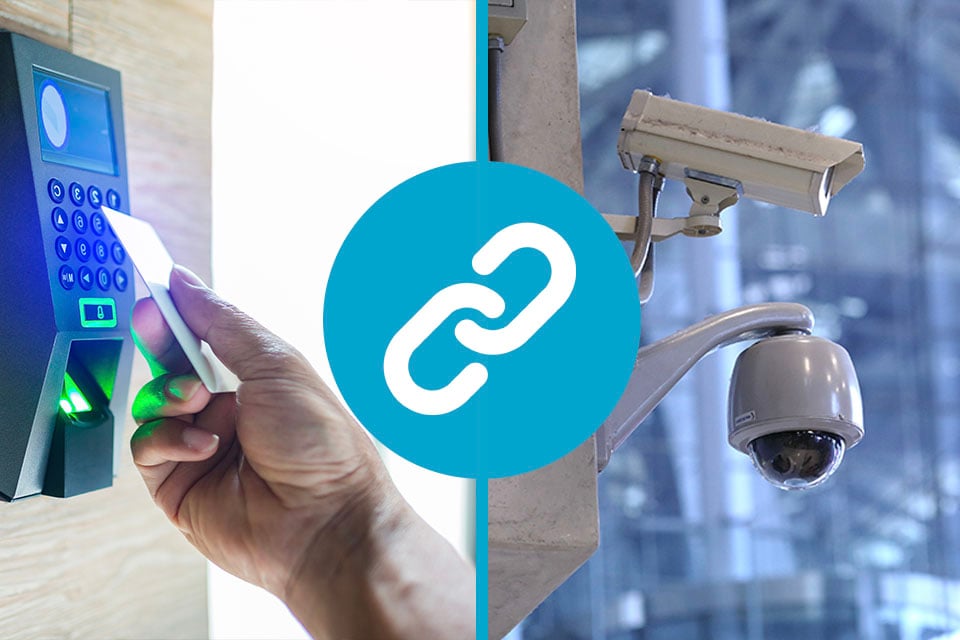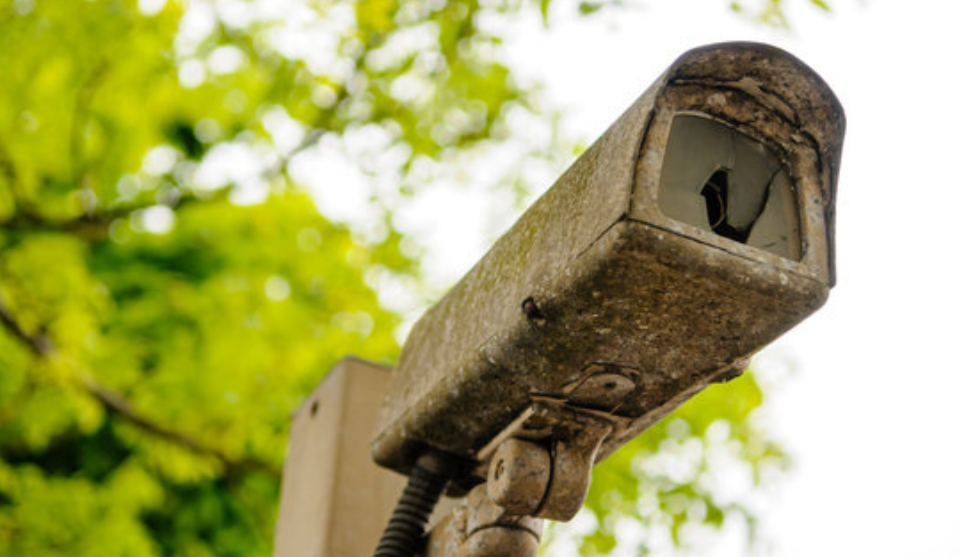Despite routine fire drills and regular testing, school fires still happen - and they can be fatal.
Last year alone, uncontrolled building fires caused approximately 272 fatalities in the UK, many of which could have been entirely prevented with proper respect for fire safety regulation.
Jump To
- What Are the Main Causes of School Fires?
- What Are My Day-to-Day School Fire Safety Responsibilities?
- What Is the UK Legislation for School Fire Safety?
- How Do I Perform a School Fire Risk Assessment?
- Schedule Regular Fire Alarm Maintenance
- Keep Your Fire Safety Systems Updated
- Final Thoughts
If you’re a school governor, headteacher or senior leader, you need to ensure that your premises are fire safe at all times. This responsibility goes far beyond installing a few simple alarms and fire doors. In fact, it’s a legal obligation to be fully proactive with fire safety. It can be the difference between life and death.
In this blog, we’ll take a comprehensive look at the key responsibilities you have as a senior school official, and how you can make your premises fireproof for the near future.

What Are the Main Causes of School Fires?
Fires in schools are very, very rare. In fact, fewer than one in 1000 school buildings are damaged by fire each year - but that’s not to say that they don’t happen.
The reason this number is so low currently is due to the seriousness with which fire safety regulation is taken in the UK. Cutting any corners with general fire precautions today simply isn’t worth it, and could cost a school, college or university millions in legal fines, if not damage and reputation.
Plus, school buildings are unlike any other place of work as they present a range of unique fire hazards, from chemistry labs to unmonitored cooking stations in food technology classes. Below, we’ve listed some of the most common causes of school fires in the UK.
Arson
Arson happens. In fact, it’s directly responsible for 60% of all serious fires in schools according to the Home Office. We recommend you set up a proactive smart security system to deter vandalism and arson on your property.
Faulty Electrics
Electrical faults top the list for the most common causes of fire in the UK, being responsible for around 12,000 UK fires each year. Loose wires, overloaded plugs, faulty connections, one of the reasons that it’s so common is that it can happen anywhere, at any time - without any warning.
Smoking
Smoking is banned indoors or within 25 feet of most buildings for a good reason. And it’s not just the risk of lung-related health conditions. Approximately 36% of UK fires are caused by smokers’ materials being carelessly discarded.
High Risk Areas
Chemistry labs are often full of flammable materials and fire starting items like bunsen burners. When stored poorly, or unmanaged, the combination of these materials could cause a seriously dangerous chemical fire on school property. Similarly, Design and Technology rooms and Cookery classes are filled with potentially hazardous equipment. Even a simple spark from an unsupervised rotary saw could put a school at risk.
Neglecting Upgrades & Not Taking Care of Detection Systems
66% of schools are rated as ‘Poor’ for fire protection. Failure to maintain fire safety equipment can be one of the mostly costly oversights a school can make. The government has recently announced a £1.5bn ‘rebuild and repair’ programme for schools, making it more viable for schools to finance repairs and servicing.
Heating & Cooking Systems
Any facility that has cooking equipment is at risk of fire. Ironically, the fat and oils we cook with are incredibly combustible. Any food that has splattered or dripped down into a microwave, toaster oven or George Foreman can continue to burn, potentially igniting a spark inside the appliance. Remember: in every kitchen there’s flammable oils, high temperatures and gas. If not properly cleaned and maintained, this trio can be a recipe for disaster.

What Are My Day-to-Day School Fire Safety Responsibilities?
Follow Basic Fire Safety Guidelines
Keep all fire doors on-site closed with fire routes and exit pathways clear. It’s crucial to understand how your business stays protected against fire and ensure that staff are equally briefed with this knowledge.
Maintain Fire Detection Systems & Equipment
Ensure your equipment is regularly maintained by a professional, from your extinguishers to your smoke alarms. Faults with these technologies are not uncommon. Today, you have approximately 3-5 minutes to escape a fire, so responding quickly is of huge importance.
Ensure Electrical Equipment Is PAT Tested & Well-Maintained
Regularly PAT testing your electrical equipment will ensure that old electrical devices are less conducive to sparking or blowing, which can lead to dangerous electrical fires. Ensure to protect all sockets and plugs in your buildings from intentional damage also, as loose wires and unscrewed casings can present additional fire safety challenges.
Store Flammable Materials Properly
Keep all flammable materials from Science labs and other facilities stored appropriately when not in use. Chemicals like ethanol and certain solvents can be extremely flammable. If a container were to break and release these harsh materials into the atmosphere, it would only take the slightest ignition to cause severe - potentially fatal - damage.
Run Regular Fire Drills
Regularly test your alarms in line with the latest government regulations. As a school leader, you have a responsibility to ensure that your alarms are tested at least annually, though The National Union of Teachers advise testing each term for full reassurance.

What Is the UK Legislation for School Fire Safety?
Every school, college, university or other educational facility in England and Wales is covered by The Regulatory Reform (Fire Safety) Order 2005. This outlines the minimum reasonable steps needed to reduce the risk of fire in the workplace, and sets guidelines for planning in the situation of an emergency.
Primarily, the school must have a clearly appointed ‘Responsible Person’ for managing fire safety onsite. This individual can be anyone with some "control of the premises". Under The Regulatory Reform (2005), the "Responsible Person" needs to:
- Carry out a fire risk assessment (or use an external agency) and regularly review.
- Inform staff of any risks identified.
- Put in place fire safety measures to reduce the risk.
- Keep fire safety measured up to date and maintained.
- Store flammable and explosive material securely.
- Review and record emergency procedure planning.
- Form an Emergency Evacuation Plan.
- Provide staff with information and training.
In the following section, we'll dive deeper into the procedures you should follow to ensure your fire safety measures are up-to-date and RRO 2005 approved.
What Is a School Fire Risk Assessment?
Schools have an obligation under UK law to properly safeguard students and staff against fire hazards on their site. As part of this, the outlined ‘Responsible Person’ should complete a thorough Fire Risk Assessment annually (or sooner if the building changes) to identify any new, or existing, risks.
While schools can assign this duty to a ‘suitably competent’ person themselves, it is often outsourced to a reliable third-party risk assessor. Either way, our risk assessor will have the responsibility to:
- Identify Potential Fire Risks
- Identify Any Individuals at Risk
- Assess the Effectiveness of Detection and Suppression Systems
- Assess the Existing Crisis Protocol including Escape Routes and Fire Drills
- Create and Implement a Fire Safety Action Plan
- Keep the Risk Assessment Regularly Updated
So why is all of this important? For one, there’s the safety risk. These regulations are in place for a reason. There’s also severe financial and legal consequences for businesses that do not follow these regulations such as unlimited fines, prosecution and in extreme instances even prison sentences.
-1.webp?width=960&height=400&name=Fire%20Risk%20Assessment%20Responsibilities%20(1)-1.webp)
How Do I Perform a School Fire Risk Assessment?
Your annual fire risk assessment is in place to help you to determine the chances of a fire starting, and the dangers that your building presents for people who use them. There are five steps to conducting a thorough risk assessment, including:
- Identify Fire Hazards
- Identify People at Risk
- Evaluate, Remove, Reduce and Protect from Risk
- Record, Plan, Inform, Instruct and Train
- Review
Much of the information for your risk assessment in your risk assessment will come from your (or your employees) knowledge of the premises. A tour of the building will probably be needed to confirm, amend or add to detail to your own understanding of each area.
Your risk assessment should always be carried out in a practical and systematic way. A simple walk-around isn’t enough; your risk assessment should take your whole premises into account, including outdoor areas, unoccupied rooms, corridors and any other space.
Are you an assigned ‘Responsible Person’? In the following section we’ll delve deeper into the risk steps you need to take to ensure full fire safety.
.webp?width=960&height=440&name=Fire%20Suppression%20Alarm%20(1).webp)
1. Identify Fire Hazards
For a fire to start, three elements are needed:
- A source of ignition (spark)
- Fuel
- Oxygen
As part of step one, you need to identify potential ignition sources, and the materials that could create a flame. Sources of ignition in schools can include electric heaters, workshop tools, cooking equipment, naked flames, electrical items, smokers materials, light fittings and central heating.
Sources of fuel can include: cooking oils, solvents, adhesives, lab chemicals, cleaning products, paper, books, clothing, theatre props, gym mats, furniture and textiles.
2. Identify People at Risk
The next step is to identify people at risk. Consider where your staff or students will be working whenever they are in the premises and identify how external parties may be affected, such as members of the public, visiting contractors or general visitors.
It’s also critical that you pay attention to those a significant risk, including:
- Unsupervised Students
- Non-Native Speaking Students or those with Language Difficulties
- Newcomers, or those Unfamiliar with the Layout of the Premises
- People with Disabilities (Including mobility impairment, or heaving and vision impairment etc)
3. Evaluate, Remove, Reduce and Protect from Risk
Evaluate: Look critically at your premises and try to identify any accidents waiting to happen and any acts or omissions which may enable a fire to start.
Evaluate
Typically, fires start in one of three ways:
Accidentally; careless discard or storage of flammable materials or when lighting displays are knocked over.
Ignorance; such as when electrical office equipment isn’t maintained, or positioned in unsafe locations.
Deliberately; such as arson attacks, bin fires or other intentional omissions that enable a fire to start.
Remove and Reduce
Having identified the above risks, you now need to remove those hazards in a reasonable way. If the hazard cannot be removed, it should be reduced if possible, with reasonable precautions in place to increase safety.
Ensure that the actions you take to remove or reduce fire hazards or risk are not substituted for other hazards. For example, if you replace a flammable substance with a toxic or corrosive one, you must consider whether this might cause harm to people in other ways.
4. Record, Plan, Inform, Instruct and Train
As a ‘Responsible Person’, you must record all findings and actions from your risk assessment clearly. This should include details of:
- The hazards you have identified.
- The actions you have taken to resolve.
- Persons who are at increased risk.
- How you intend to reduce their risk.
- The information you need to take in case of a fire.
- The fire safety training you have given to staff.
The enforcing authority has the eligibility to call on any establishment to present their risk assessment. You must be able to satisfy this request at any given time.
In most schools, your report will be no more than a few simple sheets of paper containing details of your significant findings, the actions taken and your emergency fire safety management plan. In more complex, multi-storey locations, it’s best to keep all of the above alongside any additional information like maintenance documents and training protocol.
5. Review
You should carry out a risk assessment on your premises at least once a year, but be mindful that fire safety requires constant monitoring. You should constantly be aware of your requirements and responsibilities to assess how effectively risk is being controlled.
If you have any reason to suspect that your risk assessment is no longer valid, or there has been a significant change in the infrastructure of your building, you’ll need to review your assessment and revise if necessary.

Schedule Regular Fire Alarm Maintenance
If you’re already testing your alarm as part of your fire safety procedures - great! But, just installing a working fire alarm isn’t enough to guarantee your safety. Under the British Standard 5839, Clause 44, fire alarms must be regularly serviced to identify faults and issues that could stop them working when you need them most.
In a school, it’s easy for alarms and detectors to become clogged with dust particles and other debris. The risk here is that the detectors can’t pick up traces of smoke and heat in the same way, risking activation and shrinking the time your staff have to react.
For this reason, having a dedicated professional maintenance service maintain fire detection and alarm systems is generally your best bet. A professional will be able to check all of your call-points and assess how effective they are. They’ll also be able to ensure that the connection to your Alarm Receiving Centre (ARC) is strong enough to make a difference.

Keep Your Fire Safety Systems Updated
There’s really no excuse for having outdated fire safety systems in your school. Cutting corners with alarms, detectors, and suppression systems is quite literally putting the lives of your students and staff in fate’s hands.
No fire alarm system is totally future-proof. As we mentioned earlier, fire detection systems are prone to having a build-up of dust and particles blocking their sensors over long periods of time. This can play havoc with their sensitivity, resulting in increased detection times or on the flip side, a higher number of false alarms.
Once an alarm system is over 10 years old, it’ll need more frequent maintenance and repairs to stop this. Sure, the repairs will keep it alive for a little longer, but there’s no doubt that your system will be less reliable. Not to mention, running regular repairs to keep old tech running can be extremely expensive, so often it’s just worth upgrading and paying one single fee upfront.
It’s also worth remembering that with age comes newer, more advanced technology. As experts in the field, we can tell you that fire and security technology moves incredibly fast. In the timeframe between buying your system and looking to upgrade, a whole range of new, innovative and versatile detection systems will be released. This means that once those ten years are up, your existing system is likely to be far less reliable than a more modern alternative anyway.

Key Considerations
No two buildings are the same. If you want to take fire protection seriously on your premises, you need to tailor your risk assessment to the needs of your school. There’s no “One Checklist” for a comprehensive fire risk assessment, but here are a few critical considerations to consider:
What Is Your Maximum Occupancy?
Consider how many people can be safely in your building at any given time, including all students, staff and visitors. Without this knowledge, you’ll never be able to safely manage your school against fire. Take into account specific events such as Parent Evenings, School Performances and Results Days where a higher occupancy is required as well.
How Are You Going to Cater for Disabled Students?
In every school, certain students will require wheelchair-accessible exits. Hearing or visually impaired students may need additional support in being alerted to the presence of a fire. Your strategy should take all of this into consideration and find an apt solution - whether that’s one-to-one support or specific responsibility assigned to members of staff. This is obviously even more crucial for special schools and pupil referral units.
Will Children Adhere to Your Exit Strategy?
As a general rule, all children should be made aware of the risks of fire, not to extinguish the flames themselves, but to ensure full compliance with your exit strategy. Take the time to ensure every child is familiar with the process through yearly fire drills and reinforce the importance during every test.
Are You Doing Enough to Control Antisocial Behaviour?
From smoking to bullying: antisocial behaviour is inevitable on school grounds. Ensure you take the time to put appropriate security measures in place like CCTV to keep a watchful eye over potentially fire-starting behaviours. When 60% of school fires are caused by arson, it’s never worth taking chances.

Final Thoughts
Looking to improve fire protection on your school premises? We can help. At Chris Lewis Group, we’ve been the South East’s number one fire and security service for over 30 years. And for good reason.
Our BAFE accredited team specialise in the design installation and maintenance of powerful fire safety and suppression systems. We give our customers the extra edge to respond safely and proactively against fire.
Or, if you’re just looking for a great risk assessment provider, we can help with that too. Our assessors are fully trained in the process of carrying out strategic, thorough risk assessments in schools - from big and historic to modern and small.
Whether you’re thinking about installing a new fire detection system or just maintaining your existing technology, think Chris Lewis Group. We’ve got you covered.

Luke Lewis-Rippington
Related Posts
Fire Alarm Monitoring: The Benefits and Costs
Fire brigade callouts rose by over 11% last year, to the highest number in a decade, with UK Fire Services called out over 700,000 times. It seems like - after a fall during the pandemic - building.
The Types of Fire Extinguisher and How to Use Them
Fire extinguishers are a crucial piece of fire safety equipment. They can be the difference between a small fire that is nipped in the bud, and one that quickly spreads out of control, causing huge.
Everything You Need to Know About Fire Alarm Systems, Explained
There’s lots to consider when looking to install or upgrade a fire alarm system. In order to make things a little easier, and to simplify the information that’s out there, in this blog we talk about.


